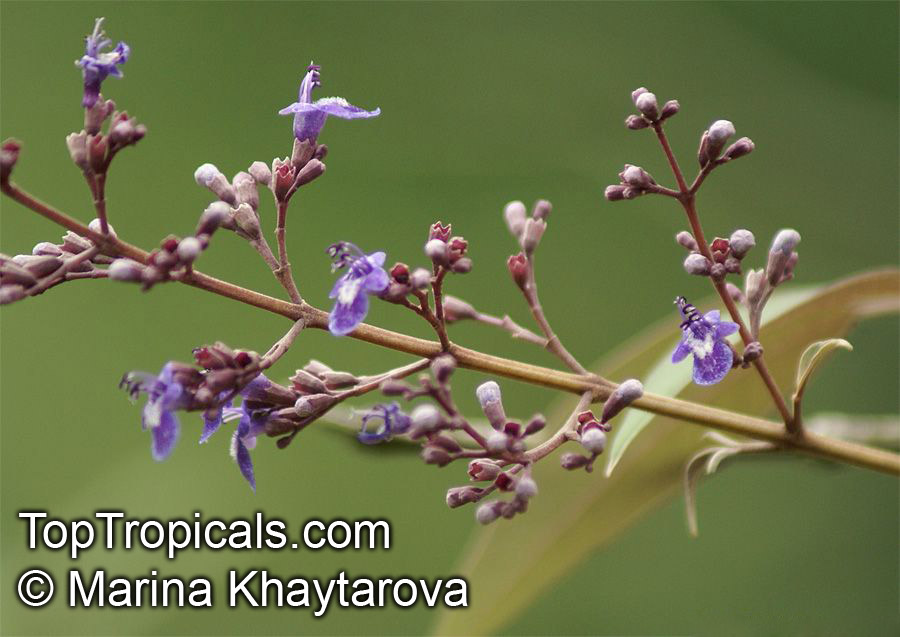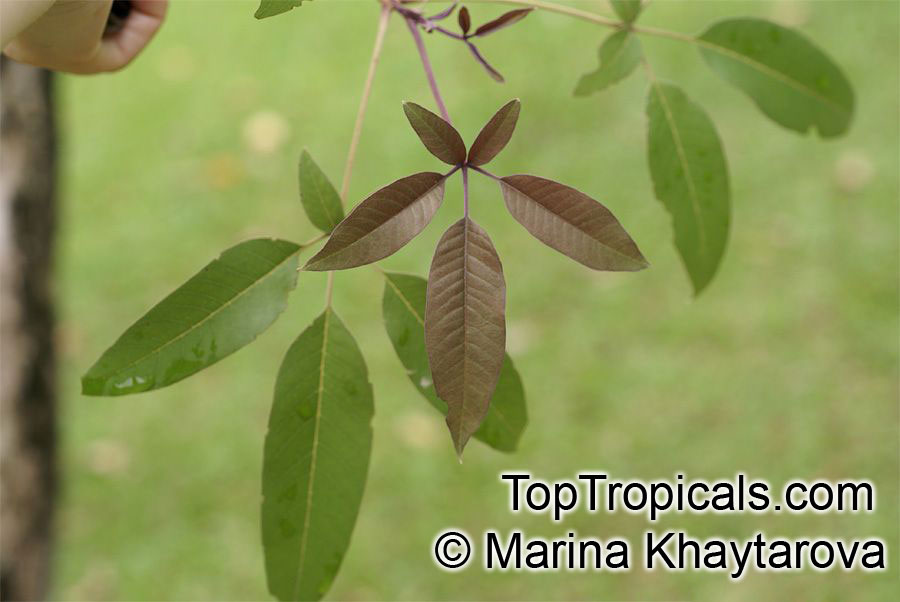Vitex negundo (Five-leaved Chaste Tree)
Top Tropicals Plant Encyclopedia
Botanical name: Vitex negundo
Common name: Five-leaved Chaste Tree
Family: Lamiaceae (Formerly:Verbenaceae)
Origin: Tropical Africa and Asia








This shrub is native to Tropical Africa and Asia, where it can be found in open areas, thickets, roadsides, fields and along riverbanks. Vitex negundo is a deciduous shrub or a small tree that typically grows 5-10 ft tall and spreads in an irregular and rounded shape. The leaves are opposite, 3-5 inches long, with 5-7 leaflets that are deeply divided, dark green and hairy on the underside.
The flowers are small, axillary clusters of sessile flowers and bloom in late spring or early summer months. This shrub is known for its gorgeous display of blue, lavender, or purple flowers. Depending upon the cultivar, some flowers are a dark purplish hue, while others are a light bluish-violet.
Vitex negundo is perfect for adding an ornamental look to any garden with its beautiful display of blossoms and lush foliage. This species is best grown in full sun or semi-shade and prefers medium to wet soil. This plant needs regular water and is quite tolerant to fluctuating weather conditions. It can tolerate temperatures down to USDA Zone 9-11.
Growers can plant Vitex negundo in a wide range of containers and soil types. To ensure successfully growing, one should amend the soil with compost, soil conditioner and mulch when planted in containers. Water regularly during the growing season, but allow the soil to dry between waterings. Container-grown plants should receive extra protection from extreme cold in winter.
Vitex negundo is used for its ethnomedical properties by many cultures. The leaves, flowers and seeds are used to treat a variety of ailments from headache, digestive issues and skin diseases to malaria, liver diseases, bronchitis and asthma. The leaves, bark, and roots of Vitex negundo have been used for centuries for culinary uses, for religious offerings, for medicinal remedies and for garden ornamentals.
Similar plants: Vitex negundo (Five-leaved Chaste Tree)
- Gmelina macrophylla (Grey Teak)
- Vitex agnus-castus (Chaste Berry)
- Vitex glabrata (Black Currant Tree)
- Vitex lucens (Puriri)
- Vitex megapotamica (Taruma)
- Vitex rotundifolia (Beach Vitex)
- Vitex sp. 'Variegata' (Variegated Arabian Lilac)
- Vitex trifolia 'Purpurea' (Arabian Lilac)
- Vitex trifolia 'Variegata' (Variegated Arabian Lilac)

